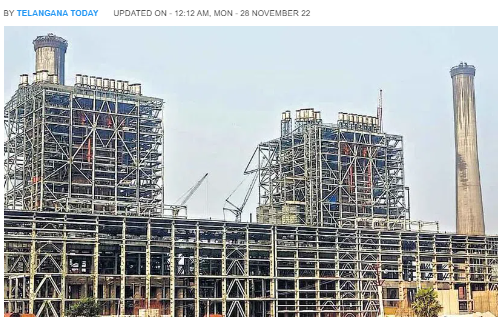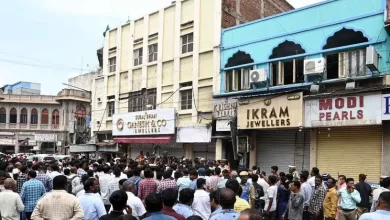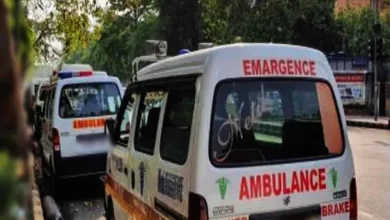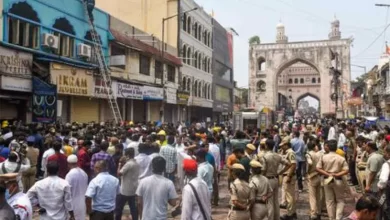Yadadri power project works in full swing

Hyderabad: Chief Minister K Chandrashekhar Rao’s visit to the Yadadri Ultra Mega Power Plant (UMPP) on Monday will not be a regular inspection visit, but one to check on the progress of a major landmark in the making for the State’s power sector.
The project, likely to be commissioned in September next year, is one of the most ambitious steps initiated by Chandrashekhar Rao soon after the formation of the State and will have a major role to play in the continuation of the 24×7 free power supply scheme.
The 4,000-megawatt (MW) power station — billed as the biggest thermal plant in the public sector so far — is coming up in Damarcherla mandal of Nalgonda at an estimated cost of Rs 29,992 crore. Officials expect that once the project was commissioned, Telangana would no longer have any power deficit. Bharat Heavy Electricals Limited (BHEL) has bagged the contract for the construction of the supercritical plant, which will have five units of 800 MW each.
Telangana State Power Generation Corporation (TS Genco) officials said the first unit would start generating power in September 2023. The second unit was expected to be commissioned in December of the same year, while the remaining two would be commissioned in 2024.
According to Genco officials, the project works are in full swing. About 62 per cent of the work has already been completed. This is the third thermal power plant taken up after the formation of Telangana. Genco established the Kothagudem thermal plant with 800-MW capacity in a record 46 months. The project was commissioned in 2019. Subsequently, the 1,080-MW Bhadradri plant came up near Bayyaram in Bhadradri Kothagudem district.
The project was necessitated after the Narendra Modi government failed to honour the promises made by the then UPA government under the Andhra Pradesh Reorganisation Act, most importantly those with regard to ensuring adequate power supply to the new State of Telangana. Power was one of the two major challenges that Telangana faced soon after its formation.
While one challenge pertained to sharing Hyderabad as the State capital, the other was to ensure adequate power supply considering the factors such as the massive number of motor pumps for agriculture and the presence of a large number of industrial units. To address these challenges, K Chandrashekhar Rao, then the Chief Minister-designate took up the power supply issue with the UPA government which agreed to construct a new 4,000-MW thermal power plant by NTPC at Ramagundam, allocate the 400-MW Sileru Hydel Power Plant to Telangana and provide major share (53.89 per cent) in the total power generation in erstwhile Andhra Pradesh to Telangana.
But soon after the NDA government came to power, Prime Minister Narendra Modi merged seven mandals along with Sileru Hydel Power Plant to Andhra Pradesh. Irked over this, Chandrashekhar Rao gave a bandh call and termed the Prime Minister a fascist. The NTPC also stated that it would take up the thermal power plant in two phases at Ramagundam due to financial issues.
To ensure that Telangana would not have to depend on others for power supply in future, the Chief Minister took various initiatives, including the completion of pending thermal and hydel power plants, construction of new major power plants and improved transmission and supply network. Proposals were approved to develop the power plants to generate a total of 15,560 MW power, including the Yadadri Ultra Mega Power Plant (4,000 MW) at Damarcherla, Kothagudem Thermal Power Station (800 MW), Kakatiya Thermal Power Plant (600 MW), Singareni Thermal Power Plant (1,200 MW where 600 MW unit was already completed), Bhadradri Thermal Power Plant (1,080 MW), Pulichintala Hydel Power Plant (120 MW) and Lower Jurala Hydel Power Plant (240 MW), among others. It was proposed to generate another 5,000 MW through solar power and is being developed.
All these projects were taken up by the State government with its own funds. Despite the Centre delaying necessary environmental clearances and also approvals to obtain loans from financial institutions, the State government managed to complete a majority of these projects.
Accordingly, Damarcherla in Nalgonda district will be developed into a major hub for power generation to meet the increasing electricity needs of Telangana in future. Apart from the 4,000-MW Yadadri UMPP, the project has provision for expansion by another 4,000 MW. Further, there is adequate infrastructure to develop a massive solar power project with an installed capacity of 5,000-6,000 MW in the vicinity.
The power plant is being developed at a strategic location adjacent to the railway stations to ensure a seamless supply of coal from both the Singareni Collieries Company Limited as well as imported coal from Kakinada and Krishnapatnam ports.
Meanwhile, the State government established connectivity with the power grid through three different routes on Warda-Dichpally, Warangal-Varora and Angul-Palasa. Further, around Rs 12,000 crore was spent to develop infrastructure and streamline the disproportionate transmission system. Power purchase agreements were made with several States like Rajasthan such that both States could draw surplus power from each other depending on their needs, taking advantage of the delays in agricultural operations and consumption.







